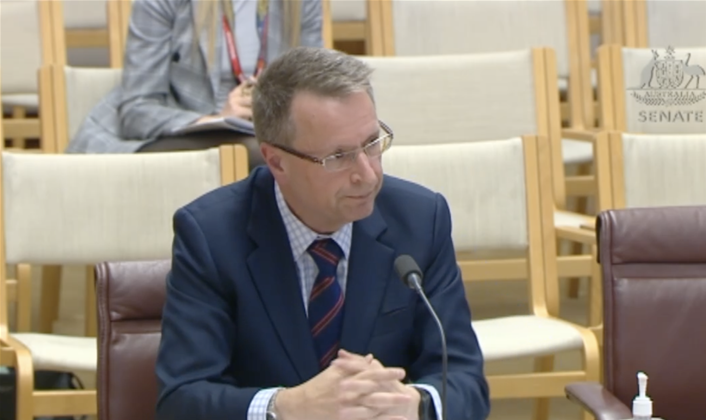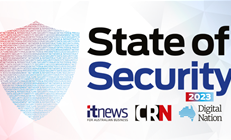Defence is set to unveil a three-year digital strategy within months that will provide a roadmap for its technology needs and transformation.

At a parliamentary hearing, chief information officer Chris Crozier said he had also established “three core priorities” for Defence’s technology function.
Formerly known as the CIO Group or CIOG, the function now goes by the name Defence Digital Group (DDG), with the restructure brought about by ICT-related findings in the Defence strategic review.
“The Defence digital strategy is an element that is now being rolled out that will provide a three-year strategic roadmap on technology and will be made available to our defence industry partners later in Q3 of this year,” Crozier said.
“This will give “sovereign” [domestic] industry the level of fidelity needed to understand and align to our direction, [and will] better support opportunity and growth for small-to-medium enterprises]."
Crozier said he had now set some core priorities to guide the work of DDG, which has existed in its current form for around six months.
“To focus DDG’s efforts in line with the government direction I’ve established three core priorities,” he said.
“The first [is] best-in-class global platforms. We’ve got to capitalise on proven technologies that we can adopt, not adapt, at pace to modernise our environment.
“Secondly, we need best-in-class sovereign capabilities. We need to support and strengthen our sovereign defence capabilities to ensure that our defence industry sector can thrive, and we capitalise on the best our nation has to offer.
“And finally, I need a best-in-class workforce within my APS [Australian Public Service] and ADF [Australian Defence Force cohort.”
Reflecting a broader government priority to reduce contractor numbers, Defence is significantly changing the make-up of its civilian workforce under Crozier’s lead.
“Historically we have had substantial contractor numbers. When I joined it was around 80 percent contractors and 20 percent government employees,” he said.
“We’re swinging that around and moving that up to 60 percent government employees to ensure that all commercial architectural and strategic decisions in the department of Defence and ICT are made by government employees and not contractors or consultants.”
Crozier added that there are “a number of other reforms” being driven by DDG “in support of our digital transformation agenda.”
Technology incubator
Crozier said he is “extremely passionate” about developing sovereign - local delivery - capabilities for technology.
Since joining Defence from the private sector in August last year, Crozier said he has met with some 200 companies, including 74 small-to-medium enterprises (SMEs).
He signalled significant work underway in the Defence ICT procurement function, putting decision-making in the hands of Defence staff, and being conscious about tender size and the packaging of work to make it feasible for smaller Australian companies to engage.
“We have centralised our procurement organisation so [as] part of the transformation we’re going through at the moment, I’ve moved from a heavily decentralised ICT procurement to a centralised one - again, moving out contractors and consultants,” Crozier said.
“In addition to that, we’ve stood up an incubation function sitting under our chief technology officer.
“That function is there to actually be able to trial technology before we then buy it.”
The incubation function may also assist - or, at least, provide guidance to - smaller companies in getting the right security clearances, both for themselves and their offerings, in order to work with Defence.
Cloud infrastructure
Defence’s cloud choices were briefly raised as a topic, in the context of whether its focus on “sovereign” services should extend to the use of more infrastructure-as-a-service from domestic providers.
Crozier said Defence used local cloud providers “for particular workloads” but that none of them were able to get near the scale of US-based cloud players.
“We work with cloud providers in Australia, and they are for particular workloads, they are fantastic organisations to work with,” he said.
“We want a portfolio of technologies, [where] we pick and choose the right technologies for the right things.”
Crozier envisions a different role for Australian industry anyway - that is, rather than focus on creating domestic “hyperscale” infrastructure operations, the real value is in developing software and applications that can sit on hyperscale infrastructure to deliver “military capability”.
“It’s the applications that sit on the hyperscaler that are clear differentiators and it’s the SMEs that have to work with us to develop those that are going to keep us safe at night,” Crozier said.
“I won’t call the hyperscalers ‘commodities’ because there are differences between the four key ones, but they are an enabler, they don’t deliver a military effect in and of themselves. It’s what you put on top [that matters].”
Work is continuing on a multi-vendor secret cloud environment.
While Microsoft earlier walked away from contributing, Crozier said that two other organisations - Google and Oracle - had since been “down-selected” to develop “a disconnected hyperscale solution that will be available to us at the secret level.”
“We are working through a process at the moment,” he said. “Both of those organisations are committed to working with us.”





_page-0001_(1).jpg&w=100&c=1&s=0)
 Integrate
Integrate












